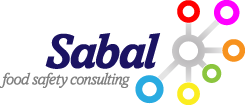
www.sabalfsc.com
Consistency and continuous improvement of a system
Whenever a decision is made to implement a system, the expected outcome is to achieve consistency on whatever will be done, the purpose. The system must be able to attain its purpose consistently.
I learned many years ago that, when developing systems, what is critically important is to make sure we comply with the requirements identified, which could be mandatory (legal requirements) or voluntary (like following an ISO Standard). This is what I believe is the most difficult aspect during the development of the system. This is understanding what we are trying to control and how we are going to do it, all in compliance with the requirements.
Understanding what we are trying to control is the first step. No matter what sector of the industry a system will be developed and implemented for, the “hazards” or “not desirable conditions” to the finished product or service must be adequately identified and understood, as well as knowing their sources. This should allow us to develop procedures that will effectively control them.
Now, some of the requirements may not be related with hazards or conditions we are trying to control but with the systems’ management components. As an example, making senior management aware of the overall effectiveness of the system is a common requirement in any system, with the intention to make them aware of the overall operations and potential needs for resources to maintain consistency and/or to improve the system.
In theory, when a system is developed, the intention is to design it to be effective all the time. That’s why it’ll be necessary to make sure that all elements, individually, and the system as a whole will achieve the purpose of the system.
It’s a fact that systems do not operate as intended all the time and deviations will occur. Whenever a system deviates from the requirements being followed it is not effective anymore. Therefore, all systems must include, as one of the its management components, procedures on how to deal with deviations, commonly known as corrective and preventive actions.
These corrective and preventive actions’ procedures have a very particular and unique purpose, to bring the system back into compliance with the requirements, which is the definition of a corrective action and, to do something to prevent the cause of the deviation from happening again, which is the definition of a preventive action. Corrective and preventive actions’ procedures are critically important to be well understood within the purpose of a system as they are the only resource a system has to recover from a deviation, including dealing with the affected product or service and, to prevent the reoccurrence of whatever caused the system to deviate from its purpose.
Corrective and preventive actions’ procedures are not related with the hazards or conditions controlled by the system. They are related with the assurance that the system is achieving the intention of the requirements and its overall purpose. Proper implementation of these procedures will provide the system with continuous improvement.
Feel free to contact us should you want to develop or improve your food safety system at This email address is being protected from spambots. You need JavaScript enabled to view it. .




